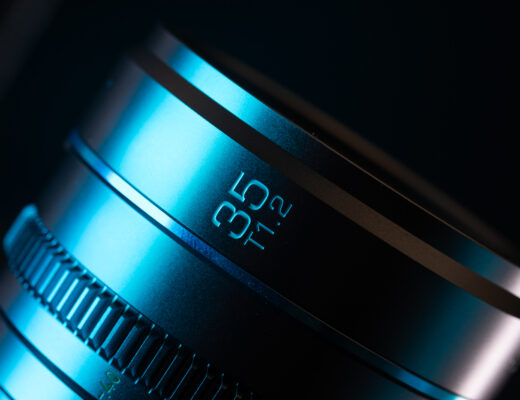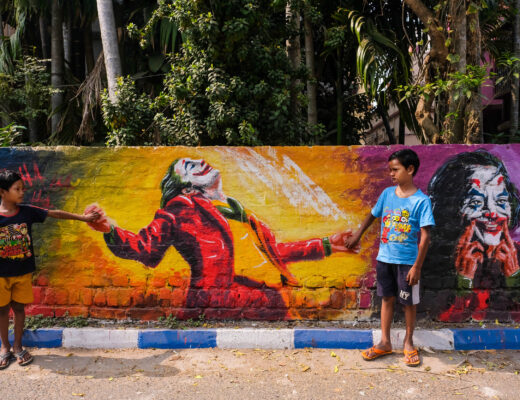To wrap up the year that has been, I always spend a couple of days taking stock of what I have photographed and the things I have learnt over the course of the year. Typically, this ends up on my Year in Review for my professional work and my Favourite Images of the Year for my personal work. This year, for Fujilove, I thought I’d take a look at my home, Korea, over the course of the year.
Ask any Korean national what Korea’s weather is like and the first response you’ll get is that Korea has four seasons. While this may not come as a shock to many of us, the distinct seasons of Korea are a source of pride for its people and, at least for a few days a year, really show themselves in a spectacular way. Over the course of this article, we’ll explore these seasons through some of the images I’ve made this year.
Winter
While we didn’t have the coldest winter we’ve ever had this year, we did have one of the most extreme I’ve seen to date. We had more snow than I’ve ever seen and, while not too many, a few brutally cold days that froze all of the country’s waterways.
I’ve been hoping for years to photograph a small town a couple of hours south called Danyang. Specifically, I’d had a snow-covered image in mind of the three rocky peaks in the river there called Dodamsambong (Three Peaks of Dodam). So, when the weather report said “blizzard,” I immediately booked a train and called my good friend Roy Cruz to come along.
As we made our way to the peaks in the morning, the scene began to play out even better than we had hoped for. Just as the sun came up, the skies cleared for a moment and we got a subtle hint of colour behind our scene. Also, a light wind was kicking up the fresh snow on the river (the foreground is a frozen river covered with snow).
I was working with the GFX 50R and GF45-100mmF4 and could have made this in-camera as a 65:24 panoramic crop. However, I wanted to have more resolution to explore later on, so I decided to turn the camera vertical and shoot a panorama. Locking all of my settings in manual mode, including focus, which was set on Dodamsambong, I started from the left of the scene and made a three-row panorama to capture plenty of detail.
To evoke a slight feeling of an ink-wash painting, I started with a base of Classic Chrome in camera. This gave just enough contrast to the scene and reduced saturation. Post-production was a simple case of keeping a reasonably low saturation while finessing the contrast between the foreground and background to make the peaks stand out without losing the feeling of the blizzard.

A panorama of Dodamsambong using the GFX 50R and GF45-100mmF4 (1/10, f/11, ISO 11, 49mm).
Spring
When spring arrives here in Korea, we think of two things. The first is that the beautiful flowers will begin to light up the world after the grim winter. The second is that the warm weather brings with it extreme pollution.
As this season began, I was also beginning my journey into David Ulrich’s excellent book, Zen Camera. As a first exercise, Ulrich asks us to begin making what he calls a ‘daily record’. Throughout this exercise, we are to photograph everything that catches our eye without passing judgement or overthinking it. The idea is to take stock, as it were, of the things that stir some emotion in us.
Air quality is one of the things I dislike most about living in Seoul and it certainly does not create positive emotions in me. However, with this different outlook on the air, I was able to begin making images of the problem and at least take something positive from the damage our respiratory systems are subjected to. Life does go on, despite the awful air, and I wanted to express that. Thus, I began photographing the fishermen along the river who dutifully show up regardless of the weather.
While this is a very simple image to execute, the mindset allowed it to happen. When it came to post-production, I made use Eterna of as the base since it best expressed the loss in contrast that the smog brought. By switching to my regular Classic Chrome or any of the other higher contrast film simulations, I instantly lost the feeling of the smog.

Seoul’s Air Pollution. X100V (1/320, f/8, ISO 500)
Summer
Summer, again, has a two-fold meaning here. Firstly, it means a bit of time off for everyone. Then it means the oppressive heat and humidity of the monsoon, which sometimes even floods all of the waterways that froze during the winter months. On top of that, we’ll often see several typhoons come through the area, bringing with them gloriously dramatic clouds, high winds and heavy rains.
It was the latter that I went to photograph this year. A typhoon was skirting our east coast and the edges of these storms are often much calmer. Also, they almost ‘throw’ very dramatic clouds across the sky from the centre of the storm. I was counting on that as I boarded the bus out to Sokcho to visit Seoraksan National Park. Seoul’s skies were still clear and blue, so I was anxiously checking the weather radars out east. Sure enough, the storm arrived just as I did.
I had arrived with the intention of getting low-lying clouds flowing around the rocks and pines of the mountains and I certainly was offered that. However, just at the end of the day as the last cable car was about to head down and leave me stranded, I was given a light show as the sun peeked between a couple of clouds close to the horizon. With the viewfinder and screen of my GFX 100S wet and fogged up, I got my exposure in the ballpark and shot like crazy for the few minutes I had to work. Then, I dashed back down to the cable car, cleaned off my screen and finally got to see what my compositions and exposures actually looked like. Here, the tonal range of the GFX really helped draw out all the details in post-production.

Typhoon clouds in Seoraksan National Park with GFX 100S and GF 45-100mm f/4 (1/160, f/9, ISO 100, 45mm).
Autumn
Autumn is, by far, my favourite season in Korea. It is usually an incredibly short but intense season where the whole world turns shades of yellow, red, and brown for just a few days before a storm knocks all the leaves off the trees and winter begins. This year, however, it has been much more drawn out and my favourite part of the season, the fog, has been plentiful.
On a recent trip out to a little town called Yangsuri, I was treated yet again to the fruits of patience. By out-waiting everyone else who had visited that morning, myself and a good friend were offered quite a scene as the sun finally burnt off enough of the fog for us to se the river.
Patience, Eterna, and a little help from the dehaze tool in Capture One, led to a gorgeous view of the little island that sits in the river. With the scene being so far away, could have worked wide open at f/4 and got all the detail I could need. Fujifilm’s GF 45-100mm is plenty sharp wide open, but f/11 ensures even the ripples in the foreground have sharp edges. Since I had enough light, I decided to stop down and capture it all.

Sunrise at Yangsuri with Fujifilm GFX 100S and GF45-100mmF4 (1/400, f/11, ISO 100).
And winter again…
Now I found myself back in winter and eagerly awaiting what this season will bring. Thanks to you-know-what, we’ve had yet another long year and work has been thin. However, I am thankful that I have been given the opportunity to photograph the various seasons with my Fujifilm cameras.
What have been your favourite image of your photographic year? Have you seen a trend or pattern emerge in your own work?



















